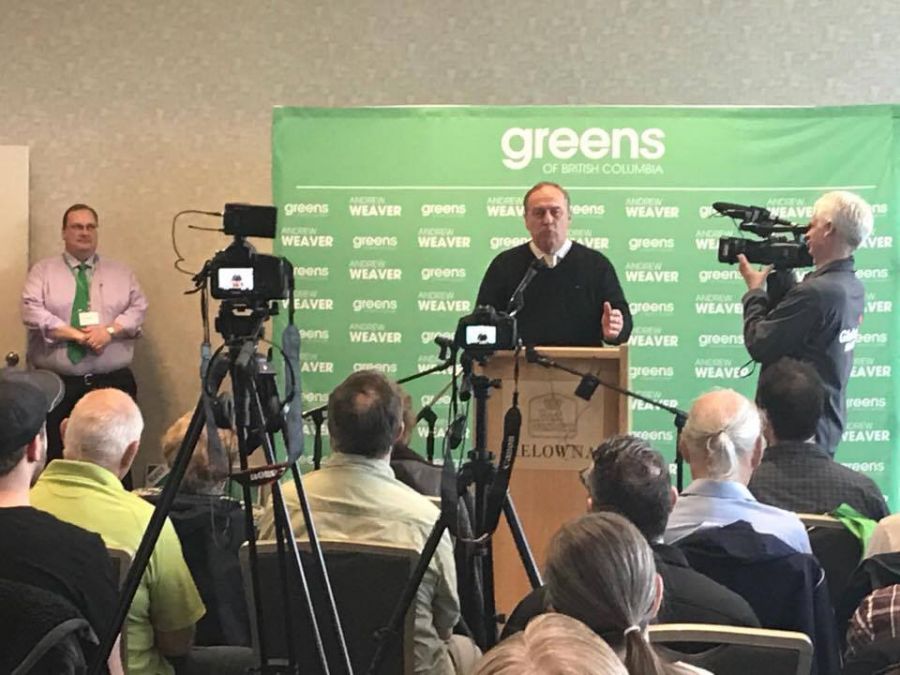The political fate of British Columbia could come down to just two ridings and a handful of absentee ballots.
Indeed, despite General Voting Day for the 2017 B.C. General Election concluding on May 9th, the election itself is far from over.

First, we will cover where we left off following General Voting Day and afterward we will examine the role of recounts and absentee ballots in determining the fate of the B.C. Legislature.
Where we left off
On May 9th, Christy Clark’s B.C. Liberals secured 43 seats, followed by John Horgan’s New Democrats with 41 seats and Andrew Weaver’s Green Party with three.
If the current seat count remains in place following upcoming recounts scheduled for later this month, British Columbia will have a hung parliament and the B.C. Greens would hold the balance of power. A hung parliament is when no party holds a majority of seats (44).

With three seats, the B.C. Greens could choose to go into coalition with either the Liberals or the New Democrats to form a majority government.
Already, Green party leader Andrew Weaver has said he looks forward to having conversations with leaders of both major parties to discuss potential alliances moving forward. Who the Greens end up deciding to go into coalition with is still up in the air.
However, there’s a chance the Greens may not end up holding the balance of power after all. The reason for this is due to upcoming recounts and the significant of absentee ballots.
Upcoming Recounts
Candidates who ran in the B.C. Election can request a recount if they have concerns about the result of their riding or potential irregularities in the counting process.
According to rules outlined in the Election Act, requests for recounts are accepted if:
- the difference between the top two candidates is close (defined in the Election Act as 100 votes or fewer); or
- votes were not correctly accepted or ballots were not correctly rejected, or a ballot account does not accurately record the number of votes for a candidate.
In total, Elections BC received six requests for recounts in the ridings of Coquitlam-Burke Mountain, Courtenay-Comox, Maple Ridge-Mission, Richmond-Queensborough and Vancouver-False Creek.

Elections BC only accepted recount requests for the ridings of Courtenay-Comox and Vancouver-False Creek. Here’s why:
According to Elections BC, the recount request for Courtenay-Comox was accepted because the difference between the Liberal and NDP candidate was a mere nine votes.
Indeed, the Courtenay-Comox race could go down as one of the closest in provincial history, with New Democrat Ronna-Rae Leonard narrowly defeating the Liberal candidate Jim Benninger by 10,058 votes to 10,049.

The recount request for Vancouver-False Creek was accepted because an advance voting ballot account records 403 votes for one candidate, and the tally sheet and parcel envelope containing ballots for that candidate lists 399.
In the Vancouver-False Creek race, Liberal incumbent Sam Sullivan narrowly defeated New Democrat Morgane Oger by just 580 votes.
Absentee Ballots
First of all, what is an absentee ballot?
An absentee ballot is any ballot completed and typically mailed in advance of an election by a voter who is unable to be present at the polls.
In past elections, absentee ballots have usually only resulted in minor changes to the final election result. However, it’s possible this time round that these ballots could change the results of a riding that could make the difference between a hung parliament and a majority government.
If the absentee ballots result in the Liberals winning the riding of Courtenay-Comox - where the NDP candidate is currently in the lead by nine votes - it will give Christy Clark’s party the 44 seats needed to form a majority government.

So what are the chances that Courtney-Comox will swing red? Unfortunately for the NDP, it’s quite probable.
The reason being is that Courtenay-Comox is home to a Canadian Forces Base (CFB Comox), where a significant number of people will be voting via absentee ballot and where the Liberal candidate Jim Benninger was a former base commander.
According to Elections BC, there’s around 179,380 absentee ballots province-wide that need to be counted.
The absentee ballots will be counted and the final results will be revealed between May 22-24.

So there you have it. If the seat count remains how it is after May 24th then the BC Greens will ultimately have the say in deciding whether to go into coalition with the Liberals or the NDP. If the Courtenay-Comox riding swings red, then B.C. will have another Liberal majority government under the Premiership of Christy Clark.
How do you think the results will turn out? Will we have four more years under a Liberal majority or will the Greens determine the fate of politics in B.C. for the next four years?
















